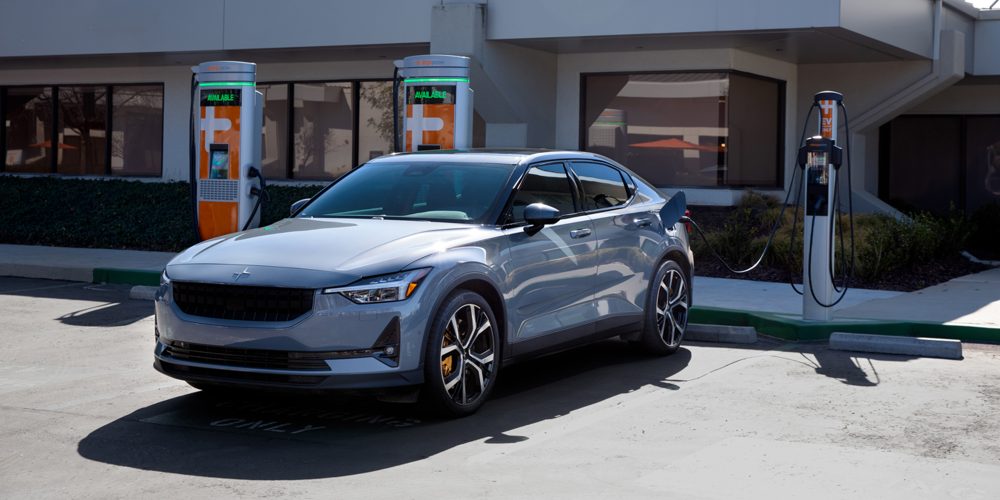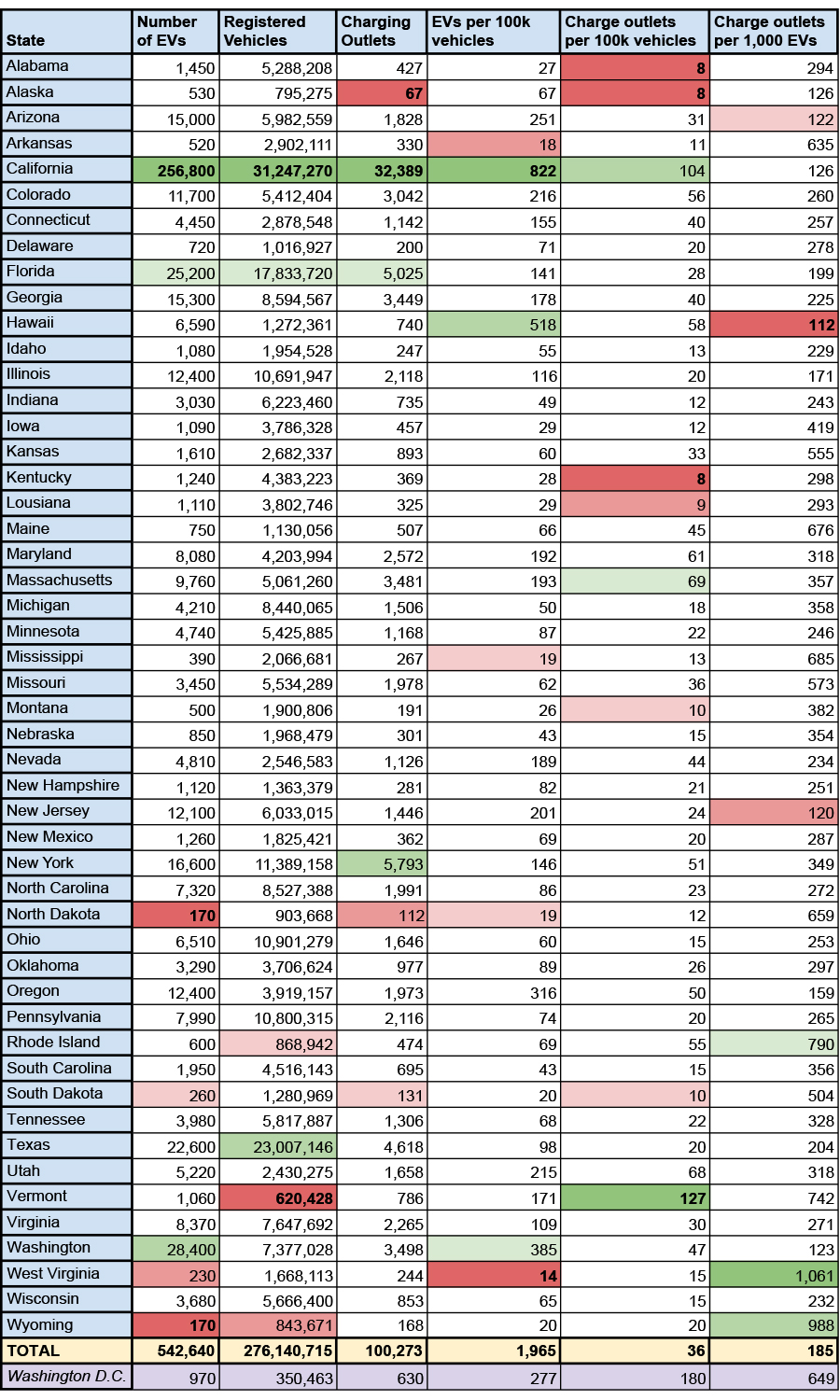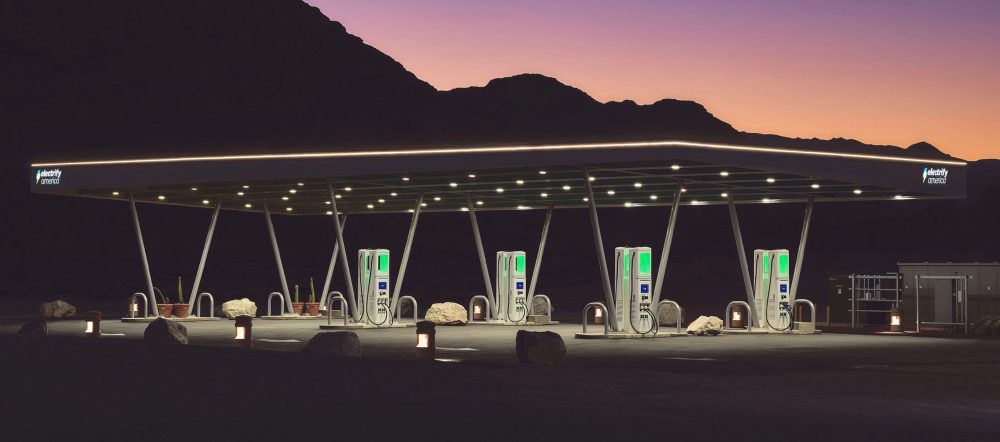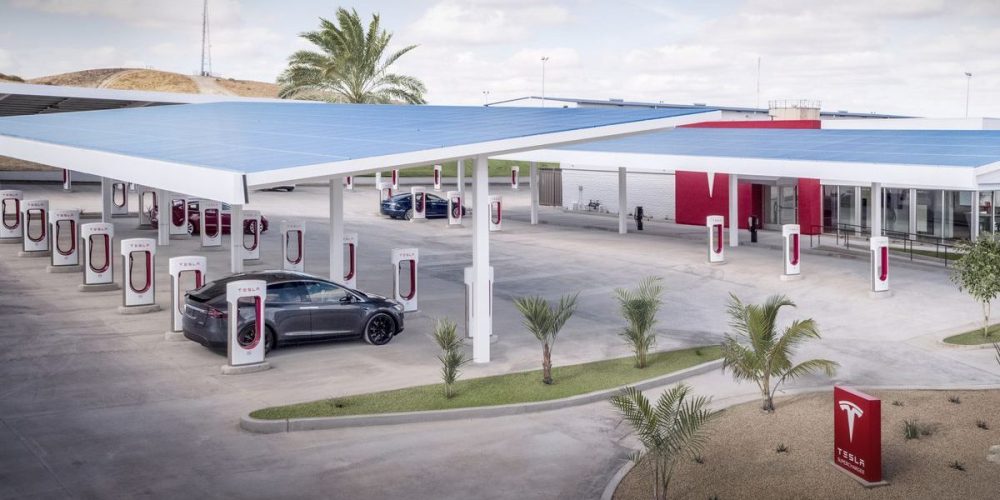
At this point in history, it’s safe to say that the electric vehicle is here to stay. At least for the foreseeable future. As EV sales grow year-over-year in the United States and the rest of the world, charging infrastructure is running to keep up. In the US, specifically, certain states are far better equipped than others to support the rising number of EV drivers on their roads. Below is a breakdown of some of the best states for EV charging along with some of the… less than best.
Table of contents
- Breaking down the US by EV charging
- How data for best states for EV charging was found
- States with the most and least EV charging points
- The data chart (sorted by state)
- States with the most charging points per vehicle
- The best states for charging points per 1,000 EVs
- So what are the best states to charge your EV?
- Charging infrastructure in the US looking forward
Breaking down the US by EV charging
Anyone who has visited the US can attest that it’s a rather large country with 50+ cultural and economical identities. United federally but still independent locally, these states are responsible for much of their own governing and decisions as it pertains to that specific state. This includes charging infrastructure.
As the number of electric vehicles grows, many states are not equipped with the charging networks this zero-emission paradigm shift requires. On the flip side, some states most certainly are. Factors such as size, geography, weather conditions, and even culture have all had their affect on how quickly or slowly electrification has been adapted.
Some states are working tirelessly to keep up, and others are not as focused since the number of EV sales remains a small percentage in comparison to ICE vehicles. Additionally, other states have the foresight to recognize this impending demand, and have already begun implementing charging infrastructure in anticipation of an EV boom.
As you will see below, there is more to this equation than simply how many EVs are on roads in a given state versus how may chargers are available. Let’s break it down.
How data for best states for EV charging was found
To determine which states are truly the best for EV charging, Zutobi released a detailed report using data from US government sites. We then took this same strategy and updated it using the most up-to-date stats.
For example, the number of charging outlets in each state is sourced from the US Department of Energy’s (DOE) Alternative Fuel Station Counts by State report. This report was last updated on April 2, 2021. This number was based on the total number of charging outlets, regardless of station or charging type (level 1, 2, DC fast charge).
To best determine the number of EVs charging in each state, the DOE’s Electric Vehicle Registrations by State was used. The data refers to the number of registered electric vehicles as of August 2020.
Finally, to calculate the total number of vehicles registered in each state, we sourced data from the US Department of Transportation’s State Motor-Vehicle Registrations 2019. This data used is the total number of both privately and publicly owned vehicles.
This is the most up-to-date data from the US government as of the time of this article’s publishing. We will continuously update this information.

States with the most and least EV charging points
As you can see from the robust table below, the number of registered EVs still pales in comparison compared to the overall number of registered vehicles for each state. Based on sheer number of charging outlets alone, the top three states in the US are California, New York, and Florida, respectively.
This make sense given all three states’ geographical size and large populations in comparison to other states. Additionally, California and Florida are also in the top three states with both the most registered EVs and total vehicles overall.
Conversely, Alaska has the fewest total number of EV charging outlets followed by the Dakotas. We will give Alaska a pass since nearly 50% of the state remains uninhabited, but North and South Dakota have some catching up to do.
If it wasn’t already clear by now, California is leading the pack in nearly every category. But as you will see below, that doesn’t necessarily make The Golden State the best to charge your EV in the future.
The data chart (sorted by state)

States with the most charging points per vehicle
As previously stated, the best states for charging your EV are determined by more than simply the number of charging outlets. Instead, we have compared the number of available charging outlets per each 100k vehicles to analyze the best ratio looking forward.
This method focuses less on the current number of EVs, and instead on how equipped a state is if all its currently registered vehicles were to shift toward electric. The results might surprise you.
1. Vermont
When thinking EV infrastructure, Vermont is probably not the first state to come to mind. However, The Green Mountain State currently has the best ratio of EV chargers at 127 for every 100k vehicles on the road. It also has 786 chargers for 1,060 EVs currently registered in the state.
2. California
The largest state on the left coast comes in at second on our list with a 104 charging points ratio. California has over 250x more registered vehicles and over 40x more charging outlets than Vermont. But Vermont’s ratio is still better per 100k vehicles. Nonetheless, California remains years ahead of all states in current EV infrastructure, and Vermont is simply better equipped to electrify its whole state at this point. An important factor at play here is that Vermont also has the smallest number of registered vehicles in the US.
3. Massachusetts
Last but not least is the Commonwealth of Massachusetts. At 69 charging outlets per 100,000 vehicles, The Bay State snags third place over Utah by one (68). The state did not place in any other category good or bad, but does currently house nearly 3,500 chargers for over 5 million vehicles. Nearly 10,000 are electric.
States with the least charging points per vehicle
Using the same method, there are several states that have some serious work to do if they plan to support the growing transition toward fully electric. Last place is a three-way tie between Alabama, Alaska, and Kentucky, and each offer an anemic eight charging outlets for every 100,000 vehicles.
Louisiana is a close second with nine charging outlets, while Montana and South Dakota round out third worst with 10 chargers apiece. If everyone in these states were to go out and switch to an EV tomorrow, folks would be waiting days to get a charger. This would be especially bad in Alabama and Kentucky, where there are 5.3 and 4.4 million current vehicles with 427 and 369 chargers, respectively.

The best states for charging points per 1,000 EVs
While our last ratio was based more on the theoretical, we applied the same methodology to each state’s current EV status to determine which has the most charging points available. We accomplished this by comparing the number of charging outlets available for every 1,000 EVs in a state. If a state had less than 1,000 EVs (sadly, too many do), our equation helps us determine how many would be present for each 1,000. If you’ve already crowned California the champ, you’re… way off?
1. West Virginia
That’s not a typo. West Virginia currently has the highest number of charging outlets for every 1,000 EVs within its state lines. However, before we go raising The Mountain State up on our shoulders, let’s take a deeper look at the data and see how we got here. As you can see above, this ratio is somewhat misleading because West Virginia only has 230 registered EVs and 244 charging outlets.
To boost that number up to over 1,000 EVs, the ratio will keep the number of outlets above the number of EVs, thus giving this state the top spot. However, it’s the second-lowest state in total registered EVs, a title not really worth celebrating. That being said, it is the only state with more charging outlets and electric vehicles, so that’s something!
2. Wyoming
Remember how West Virginia had the second-least amount of registered EVs? Well, Wyoming is number one with 170 total in the state. With 168 charging outlets for those EVs, nearly every driver can have their own. As a result, Wyoming sits in second place with an estimated 988 charging outlets for every 1,000 EVs. It’s important to note that Wyoming has the smallest population in the US at about 579,000 people.
3. Rhode Island
Third place is the smallest state in the country, Rhode Island. At 790 charging outlets per 1,000 EVs, Rhode Island smoked larger states like New York and Florida. In reality, Rhode Island has 600 EVs and 474 chargers. Not bad for an entire state that’s only about twice the size of Los Angeles.
States with the least charging points per 1,000 EVs
While the states listed above may still have some work to do for future charging infrastructure, their current ratio has them on the right path to support more electric vehicle transitions. The following states are not so well equipped.
That begins with Hawaii, which currently only offers 112 charging stations for every 1,000 EVs. Given that the state has over 6,500 EVs already, that sort of charging network is not sustainable long-term.
Next is New Jersey with 1,446 charger outlets for 12,100 EVs. An impressive number of vehicles for a smaller state, but a ratio of 120 chargers per 1,000 EVs is nothing to write home about. Drivers can take the Holland Tunnel to New York and use one of its 5,800 chargers.
Last and third from least is Arizona that currently offers less than 2,000 chargers for over 15,000 EVs. That’s a ratio of 122 to every 1,000 EVs. With companies like Lucid Motors and ElectraMeccanica building EVs in the state, Arizona better implement some more chargers quickly.

So what are the best states to charge your EV?
If you take all the ratios out of the equation, the best place to currently charge your electric vehicle is California by a long shot. That’s based on the mere fact that the state is currently home to 32,000 chargers and growing. That being said, it also has the highest number of EVs in the country, so there will be more people looking to charge up, too. Thanks to idle fees and DC supercharging, your chances of finding an open charger nearby are still pretty good.
Looking ahead, Vermont is best equipped to handle EV charging if all of its vehicles were to go electric overnight. With that said, the state has less registered vehicles than Alaska and Rhode Island, so it doesn’t have as many vehicles to worry about. Should they all become EVs however, Vermont has a great start on getting them all charged.
In terms of ratio of chargers to EVs, West Virginia takes the crown, although it almost doesn’t seem fair because of the minuscule number of EVs in the state. Ratios don’t lie, though. If West Virginia were to keep the same pace of charging infrastructure as its EV number grows, every driver would have their own charger and then some. If all its current vehicles were to suddenly go electric, however, this state would be in big trouble.
Charging infrastructure in the US looking forward
President Joe Biden has been busy during his short tenure. First he vowed to make the nation’s entire federal fleet all electric. That hasn’t quite gone to plan yet. However, the White House has already introduced two bills to reform the federal tax credit for EVs.
This will expand thresholds on the number of EVs manufacturers like Tesla and GM have surpassed to once again qualify for federal tax credits. This also includes plans to heavily expand EV charging infrastructure.
As the number of electric vehicles undoubtedly grows in each state, some will be better prepared than others. States like California and Florida, for example, are implementing charging outlets step for step with the growing number of EV sales.
Other states like Vermont and Massachusetts may not have the largest number of EVs within their state lines, but if they were to continue installing chargers at the same pace, they would easily stay ahead of the game on infrastructure.
Other states like the Dakotas are not so well prepared. Sure, they don’t have as many EVs to worry about charging just yet, but the next decade will transform our vehicle landscape, and there will need to be resources in place to keep these vessels charged.
If you include Washington, DC, the US alone has over 543,000 electric vehicles registered and over 100,000 public chargers. Not bad, but there’s always room for growth. Let’s see how the ratios stack up in 2030. Until then, we will update this chart with new US data as it goes public.
Subscribe to Electrek on YouTube for exclusive videos and subscribe to the podcast.
Author: Scooter Doll
Source: Electrek



